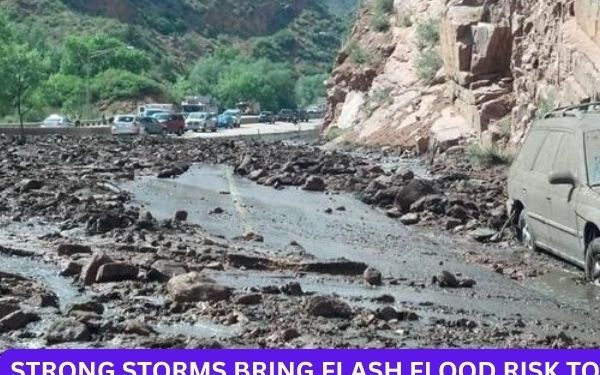Severe thunderstorms sweeping across Colorado on Tuesday have raised moderate to high flash flood risks for areas scorched by past wildfires, according to the Colorado Flood Threat Bulletin.
Flood Risk for Burn Scars
This Article Includes
Three major burn scars are under threat:
-
Alexander Mountain Fire (2024) – High risk
-
Stone Canyon Fire (2024) – High risk
-
Cameron Peak Fire (2020) – Moderate risk
The Cameron Peak Fire is Colorado’s largest recorded wildfire, burning more than 208,000 acres.
Flash Flood Warning Issued
The National Weather Service (NWS) issued a flash flood warning for central Larimer County from 11:40 a.m. to 2:15 p.m. Tuesday. Heavy rain from a slow-moving storm near Pennock Pass triggered concerns of flash flooding over the Cameron Peak burn scar and Glen Haven.
“Flash flooding is ongoing or expected to begin shortly,” the NWS warned.
Why Burn Scars Flood So Easily
Burn scars act like waterproof surfaces, repelling water rather than absorbing it—a phenomenon known as hydrophobicity. This leads to fast runoff, flash floods, and debris flows (landslides of mud, rock, and trees).
“Only half an inch of rain in less than an hour is enough to trigger flash flooding in burn areas,” the NWS noted.
Flash flood risk can linger for years after a wildfire, but it is especially high within the first two years.
What Residents Should Know
-
If you live downhill from a burn scar, monitor flash flood warnings and have an evacuation plan.
-
During a debris flow, get to high ground immediately — rooftops, hillsides, or trees may be safer.
-
Consider flood insurance, which isn’t typically included in standard homeowners’ policies. Average cost: $600/year in lower-risk zones.
Possible Solutions: Helicopter Mulch Drops
Researchers like Peter Nelson of CSU are studying how helicopter-dropped mulch helps stabilize soil and prevent erosion. The effectiveness depends on how soon it’s applied and how much is used.
Hot, Dry Weather Returns
Tuesday’s storms will be brief. By midweek, dry heat will return with possible triple-digit temperatures, the Colorado Flood Threat Bulletin said. Some records may even be broken.
Stay weather-aware and alert to rapidly changing conditions, especially if you live near wildfire zones.










